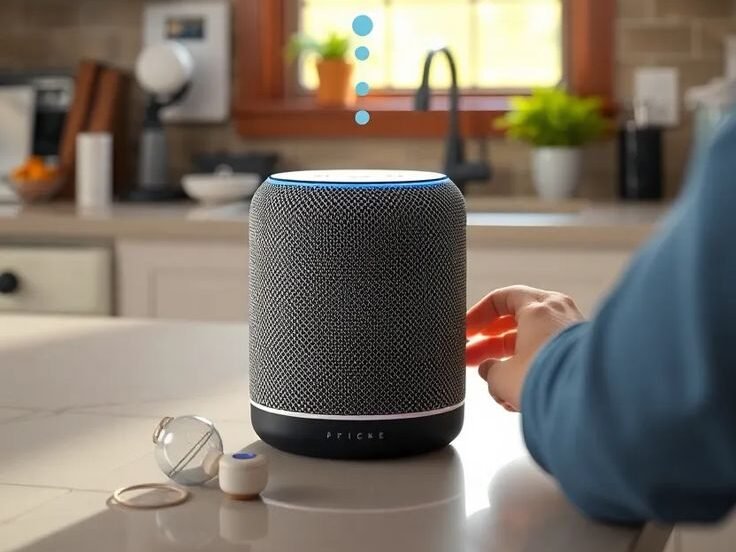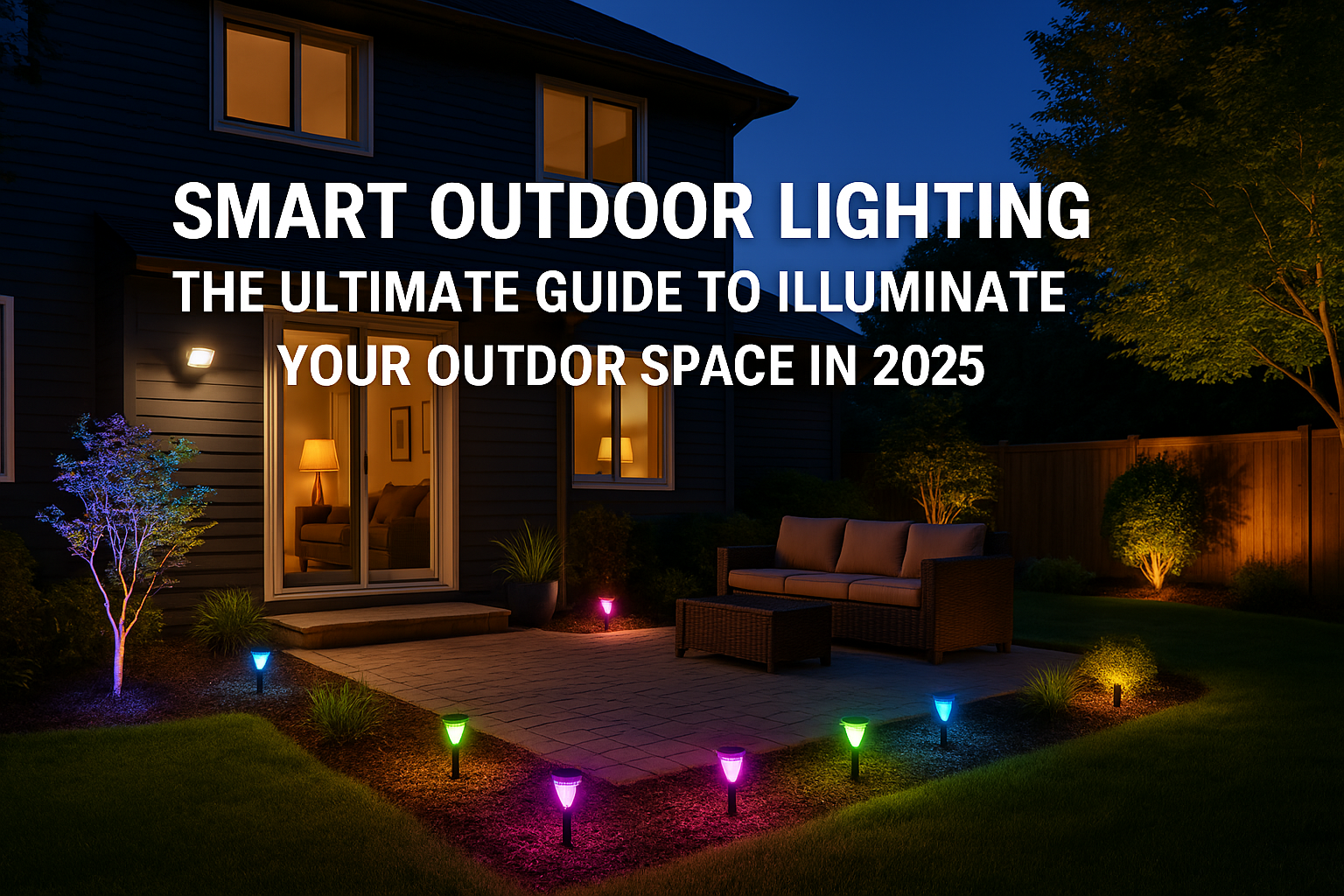Top 5 Home Automation Lighting Setups for 2025

Smart lighting is taking homes to the next level in 2025. From energy savings to customizable ambience, the advancements in home automation lighting make it a must-have upgrade for homeowners and renters alike. Whether you’re new to smart home ideas or looking to level up, this guide will help you explore the best lighting automation setups for 2025, complete with actionable steps to fit them into your home.
Why Smart Lighting in 2025 Is Smarter Than Ever
With 2025 comes a fresh wave of innovation. Smart home lighting trends are evolving with more intuitive controls, better device integration, and features that prioritize energy efficiency. Expect smarter sensors, improved compatibility across platforms (think Alexa lighting routines and Google Home lighting setup), and even more streamlined apps for full home control.
Why go smart with lighting?
- Energy savings: Modern smart bulbs like LEDs consume up to 80% less energy.
- Enhanced convenience: Schedule lights to match your routine or control them via voice commands.
- Customizability: Create dynamic mood lighting, sync lights for events, or automate based on time of day.
Now, let’s explore the top 5 smart lighting setups for 2025!
The Top 5 Lighting Setups for 2025
1. Motion-Activated Hallway Lighting with Ambient Sensors
Imagine walking through your hallway at night without scrambling for a light switch. Motion-activated hallway lighting is one of the most efficient and convenient setups for modern homes. By installing ambient light sensors, the lights can adjust their brightness based on the time of day or surrounding lighting conditions.
Devices Needed:
- Smart motion sensors (e.g., Philips Hue Motion Sensor, Aqara Motion Sensor)
- Smart LED strip lights or bulbs
- Hub or smart device integration via Alexa or Google Home
Setup Highlights:
- Perfect for night-time safety without being blindingly bright.
- Saves energy by activating only when needed.
- Easy to install in stairways, entryways, or hallways.
Pro Tip: Use dimmable LEDs and customize sensitivity through apps to avoid unnecessary activations during the day.
2. Voice-Controlled Bedroom Scene Lighting
Turn your bedroom into a cozy retreat with voice-controlled smart lighting. Set the perfect scene for reading, sleeping, or waking up by integrating smart lighting with your favorite voice assistant.
Devices Needed:
- Smart bulbs (e.g., Sengled, Nanoleaf, or Philips Hue)
- Your choice of Alexa or Google Home device
- A smart plug if integrating non-smart lamps
Features to Love:
- Hands-free operation: Say “Goodnight Alexa” to switch off lights without leaving the bed.
- Customizable scenes for different moods, like dim lighting for movie nights or bright daylight when folding laundry.
- Automatically sync lighting with alarms to ease into your mornings.
Cons: Requires familiarity with your voice assistant setup, but once done, it’s smooth sailing.
3. Sunset-Based Living Room Automation
Recreate nature’s rhythms in your living room with sunset-based lighting automation. By syncing your lights with the local sunset schedule, you can create an evening ambience that gradually shifts from bright to warm and cozy tones.
Devices Needed:
- Smart bulbs with adjustable warmth (e.g., Wyze Color Bulbs)
- Automation platforms like Apple HomeKit, SmartThings, or IFTTT
Benefits:
- Mimics natural light changes, which is great for winding down after work.
- Perfect for creating movie night or dinner vibes.
- Reduces blue light exposure as the evening progresses.
Highlighting energy-efficient lighting solutions, this setup uses LEDs and automation to ensure lights dim when not needed, cutting down power usage.
4. Multi-Room Sync with Smart Assistant Routines
Why settle for individual room-control when you could connect your entire home seamlessly? Multi-room sync allows you to coordinate lighting across multiple zones using smart assistant routines.
Devices Needed:
- A mix of smart bulbs, switches, and plugs in multiple rooms
- A central hub or voice assistant (Alexa or Google Home)
How It Works:
- Sync lights to routines, like “Movie Time,” which lowers living room lights while brightening up the kitchen for snacks.
- Group lights together via apps for one-tap control for an entire floor or home.
- Perfect for hosting events or keeping a busy home connected.
Pro Tip: Incorporate routines like “Wind Down” that dim lights in every room before bedtime to save energy and encourage better sleep habits.
5. Outdoor Lighting Automation with Security Features
Outdoor areas are just as important as indoor spaces. With smart outdoor lighting, you can add both functionality and security to your home. Lights can turn on automatically when motion is detected, or they can activate according to your schedule.
Devices Needed:
- Weatherproof smart bulbs or floodlights (e.g., Ring Floodlight Cam, TP-Link Kasa Outdoor)
- Motion detectors or smart doorbell integration
- Smartphone app for remote control
Benefits:
- Improved safety & security: Automatically light up pathways or driveways when motion is detected.
- Use colorful lights to highlight landscaping or patios for entertaining.
- Control remotely while you’re on vacation, so your home always looks occupied.
Cons: Outdoor installations may require additional tools or professional setup, but it’s worth the investment.
Bonus Tips for Choosing the Right Setup
Not sure which configuration is best for your home? Here are some tips to help you decide:
- Consider your lifestyle: For families, motion-activated lighting might keep pathways safe for kids. Late risers may prefer sunset lighting for living rooms or bedrooms.
- Start small: Choose one zone to automate (like the bedroom or hallway) and expand as you grow more comfortable with smart lighting.
- Check compatibility: Ensure bulbs and devices work with your preferred platforms like Alexa, Google Home, or Apple HomeKit.
- Prioritize energy efficiency: Choose LEDs and smart home automation lighting features that reduce waste.
Final Thoughts
Smart lighting setups for 2025 aren’t just about looking futuristic; they bring real convenience, comfort, and savings to your home. The best part? You don’t have to automate everything at once. Start with one smart home idea, like motion-activated lighting or voice control, and expand as you discover what works best for your lifestyle.
FAQs
What is the best smart lighting setup for small apartments?
For small apartments, voice-controlled bedroom lighting or sunset-based living room automation is ideal. Both are space-efficient and easy to install.
Can I combine multiple smart lighting routines in one home?
Absolutely! You can group different routines using Alexa or Google Home to ensure each room works seamlessly together.
Are these setups compatible with both Alexa and Google Home?
Yes, most of the devices listed here are designed to integrate with both Alexa and Google Home for maximum flexibility.
